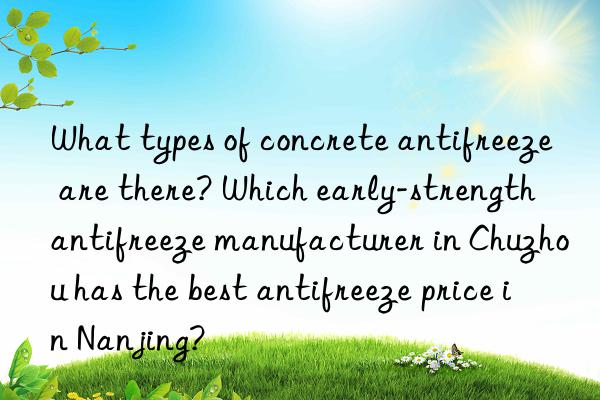
Concrete antifreeze can be divided into strong electrolyte inorganic salts (chlorine salts, chlorine salt rust inhibitors, chlorine-free salts), water-soluble organic compounds, Compound and composite antifreeze of organic compounds and inorganic salts.
—Chlorine salts: chlorine salts (such as sodium chloride , calcium chloride, etc.) as antifreeze additives;
—Chlorine rust inhibitors: additives containing rust inhibitor components and using chlorine salt as antifreeze component:
— Chlorine-free salts: additives using inorganic salts such as nitrite and nitrate as antifreeze components;
— Organic compounds: admixtures using certain alcohols, urea and other organic compounds as antifreeze components;
— Compound antifreeze: antifreeze components combine early strength, air entrainment, Admixtures for water reducing and other components.
Concrete antifreeze is combined with winter application temperature conditions, which can accelerate concrete Condensation and hardening under negative temperature conditions increase the strength significantly and do not affect the development of later strength. Chloride-free salt avoids corrosion of steel bars and improves the durability of concrete.
1. Dosage:
Liquid temperature -5 ~ -20℃, accounting for 2.0-5.0% of the cementitious material
Powder temperature -5 ~ -20℃ accounting for 2.0-5.0 of the cementitious material %
2. Function: Mainly used in commercial concrete, suitable for Reinforced concrete, prestressed concrete and fly ash-mixed concrete.



 微信扫一扫打赏
微信扫一扫打赏
